Relative Permeability Characteristics During Carbon Capture and Sequestration Process in Low-Permeable Reservoirs
Abstract
1. Introduction
2. Experimental Methods for Relative Permeability Determination
2.1. Steady-state Methods
2.2. Unsteady-state Methods
3. Empirical Correlations for Relative Permeability Determination
4. Relative Permeability for CO2 Flooding in a Low-permeable Reservoir
4.1. CO2/Oil Relative Permeability Curve in Immiscible CO2 Flooding
4.2. CO2/Water Relative Permeability Curve in Immiscible CO2 Flooding
4.3. CO2/Oil Relative Permeability Curve in Miscible CO2 Flooding
5. Discussion of Experimental Results
5.1. Relative Permeability Curves for Immiscible CO2/Oil Displacement
5.2. CO2/Water Relative Permeability Curve Under Immiscible Phase
5.3. CO2/Live Oil Relative Permeability Curve under Miscible Phase
6. Conclusions and Discussions
Author Contributions
Funding
Conflicts of Interest
References
- Bai, M.; Song, K.; Li, Y.; Sun, J.; Reinicke, K.M. Development of a novel method to evaluate well integrity during CO2 underground storage. SPE J. 2014, 20, 628–641, SPE 173000. [Google Scholar] [CrossRef]
- Bai, M.; Sun, J.; Song, K.; Reinicke, K.M.; Li, L.; Qiao, Z. Well completion and integrity evaluation for CO2 injection wells. Renew. Sustain. Energy Rev. 2015, 45, 556–564. [Google Scholar] [CrossRef]
- Bai, M.; Sun, J.; Song, K.; Reinicke, K.M.; Teodoriu, C. Evaluation of mechanical well integrity during CO2 underground storage. Environ. Earth Sci. 2015, 73, 6815–6825. [Google Scholar] [CrossRef]
- Lai, X.J.; Ye, Z.H.; Xu, Z.Z.; Husar, H.M.; Henry, L.W. Carbon capture and sequestration (CCS) technological innovation system in China: Structure, function evaluation and policy implication. Energy Policy. 2012, 50, 635–646. [Google Scholar] [CrossRef]
- Harrison, B.; Falcone, G. Carbon capture and sequestration versus carbon capture utilization and storage for enhanced oil recovery. Acta Geotechnica. 2014, 9, 29–38. [Google Scholar] [CrossRef]
- Shaw, J.; Bachu, S. Screening, evaluation, and ranking of oil reservoirs suitable for CO2-flood EOR and carbon dioxide sequestration. J. Can. Pet. Technol. 2002, 41, 51–61. [Google Scholar] [CrossRef]
- Jahangiri, H.R.; Zhang, D. Ensemble based co-optimization of carbon dioxide sequestration and enhanced oil recovery. Int. J. Greenh. Gas Control. 2012, 8, 22–33. [Google Scholar] [CrossRef]
- Li, C.; Li, H.; Yin, X.Q. Application of CO2 miscible flooding on Gao 89-1 low permeability reservoir. In Proceedings of the SPE Asia Pacific Oil and Gas Conference and Exhibition, Jakarta, Indonesia, 20–22 September 2011; pp. 1–10, SPE 144918-MS. [Google Scholar]
- Luo, P.; Meng, Y.; Shu, S.; Tang, L. Some problems in the exploration and exploitation low permeability of oil and gas resources in China. In Proceedings of the SPE International Oil and Gas Conference and Exhibition in China, Beijing, China, 2–6 November 1998; pp. 429–437, SPE 50923-MS. [Google Scholar]
- Li, F.; Yang, S.; Chen, H.; Zhang, X.; Nie, X.; Ding, J.; Zheng, A. Long core physical simulation for CO2 flooding in low permeability reservoir. Int. J. OilGas Coal Technol. 2014, 8, 251–261. [Google Scholar] [CrossRef]
- Bai, M.; Zhang, Z.; Fu, X. A review on well integrity issues for CO2 geological storage and enhanced gas recovery. Renew. Sustain. Energy Rev. 2016, 59, 920–926. [Google Scholar] [CrossRef]
- Czarnota, R.; Stopa, J.; Janiga, D.; Kosowski, P.; Wojnarowski, P. Semianalytical horizontal well length optimization under pseudosteady-state conditions. In Proceedings of the 2018 2nd International Conference on Smart Grid and Smart Cities (ICSGSC), Kuala Lumpur, Malaysia, 12–14 August 2018; IEEE: Piscataway, NJ, USA, 2018; pp. 68–72. [Google Scholar]
- Al-Wahaibi, Y.M.; Muggeridge, A.H.; Grattoni, C.A. Experimental and numerical studies of gas/oil multicontact miscible displacements in homogeneous porous media. In Proceedings of the 2005 SPE Reservoir Simulation Symposium held in Houston, Houston, TX, USA, 31 January–2 February 2005. SPE 92887. [Google Scholar]
- Al-Wahaibi, Y.M.; Muggeridge, A.H.; Grattoni, C.A. Gas-oil non-equilibrium in multicontact miscible displacements within homogeneous porous media. In Proceedings of the 2006 SPE/DOE Symposium on Improved Oil Recovery held in Tulsa, Tulsa, OK, USA, 22–26 April 2006. SPE 99727. [Google Scholar]
- Zhang, K.; Jia, N.; Zeng, F.; Li, S.; Liu, L. A review of experimental methods for determining the Oil-Gas minimum miscibility pressures. J. Pet. Sci. Eng. 2019, 183, 106366. [Google Scholar] [CrossRef]
- Krevor, S.C.M.; Pini, R.; Zuo, L.; Benson, S.M. Relative permeability and trapping of CO2 and water in sandstone rocks at reservoir conditions. Water Resour Res. 2012. [Google Scholar] [CrossRef]
- Akbarabadi, M.; Piri, M. Relative permeability hysteresis and capillary trapping characteristics of supercritical CO2/brine systems: An experimental study at reservoir conditions. Adv. Water Resour. 2013, 52, 190–206. [Google Scholar] [CrossRef]
- Chen, X.Y.; Amir, K. An experimental study of CO2-brine relative permeability in sandstone. In Proceedings of the SPE Improved Oil Recovery Symposium held in Tulsa, Tulsa, OK, USA, 12–16 April 2014. SPE 169137-MS. [Google Scholar]
- Robin, G.; Daniel, R.M. Intercept method—A novel technique to correct steady-state relative permeability data for capillary end effects. SPE Reserv. Eval. Eng. 2016, 19, 316–330, SPE 171797-PA. [Google Scholar]
- Florian, O.; Antonin, F.; Teddy, F.; Jean-Michel, P.; Arnault, L.; Patrick, D. Experimental investigation of the influence of supercritical state on the relative permeability of Vosges sandstone. Comptes Rendus Mec. 2015, 343, 495–502. [Google Scholar]
- Civan, F.; Donaldson, E.C. Relative permeability from unsteady-state displacements with capillary pressure included. SPE Form. Eval. 1989, 4, 189–193, SPE 16200-PA. [Google Scholar] [CrossRef]
- Zhang, Y.; Nishizawa, O.; Park, H.; Kiyama, T.; Xue, Z. Relative permeability of CO2 in a low-permeability rock: Implications for CO2 flow behavior in reservoirs with tight interlayers. Energy Procedia 2017, 114, 4822–4831. [Google Scholar] [CrossRef]
- Janos, T.; Tibor, B.; Peter, S.; Faruk, C. Convenient formulae for determination of relative permeability from unsteady-state fluid displacements in core plugs. J. Pet. Sci. Eng. 2002, 36, 33–44. [Google Scholar]
- Janos, T.; Tibor, B.; Peter, S.; Faruk, C. Direct determination of relative permeability from nonsteady-state constant pressure and rate displacements. In Proceedings of the SPE Production and Operations Symposium held in Oklahoma City, Oklahoma City, OK, USA, 24–27 March 2001. SPE 67318. [Google Scholar]
- Yang, Y.; Li, X.; Wu, K.; Lin, M.; Shi, J. A new unsteady-state model for calculating oil-water relative permeability of low-permeability/ultra-low permeability reservoirs. Adv. Mater. Res. Vols. 2012, 616, 964–969. [Google Scholar] [CrossRef]
- Ashrafi, M.; Helalizadeh, A. Genetic algorithm for estimating relative permeability and capillary pressure from unsteady-state displacement experiments including capillary end-effect. Energy Sources Part A. 2014, 36, 2443–2448. [Google Scholar] [CrossRef]
- Burdine, N.T. Relative permeability calculations from pore size distribution data. Trans. Am. Inst. Min. Metall. Eng. 1953, 198, 71–78. [Google Scholar] [CrossRef]
- Mualem, Y. A new model for predicting the hydraulic conductivity of unsaturated porous media. Water Resour. Res. 1976, 12, 513–522. [Google Scholar] [CrossRef]
- Bai, M.; Reinicke, K.M.; Song, K. Relative permeability model and CO2 leakage through abandoned wells during CO2 underground storage. Oil Gas-Eur. Mag. 2016, 40, 161–165. [Google Scholar]
- Van Genuchten, M.T. A closed-form equation for predicting the hydraulic conductivity of unsaturated soils. Soil Sci. Soc. Am. J. 1980, 44, 892–898. [Google Scholar] [CrossRef]
- Parker, J.C.; Lenhard, R.J.; Kuppusamy, T. A parametric model for constitutive properties governing multiphase flow in porous media. Water Res Res. 1987, 23, 618–624. [Google Scholar] [CrossRef]
- Brooks, R.H.; Corey, A.T. Properties of porous media affecting fluid flow. J. Irrig. Drain. Div. Proc. Am. Soc. Civil Eng. 1966, 92, 61–68. [Google Scholar]
- Corey, A.T. The interrelation between gas and oil relative permeabilities. Prod. Mon. 1954, 19, 38–41. [Google Scholar]
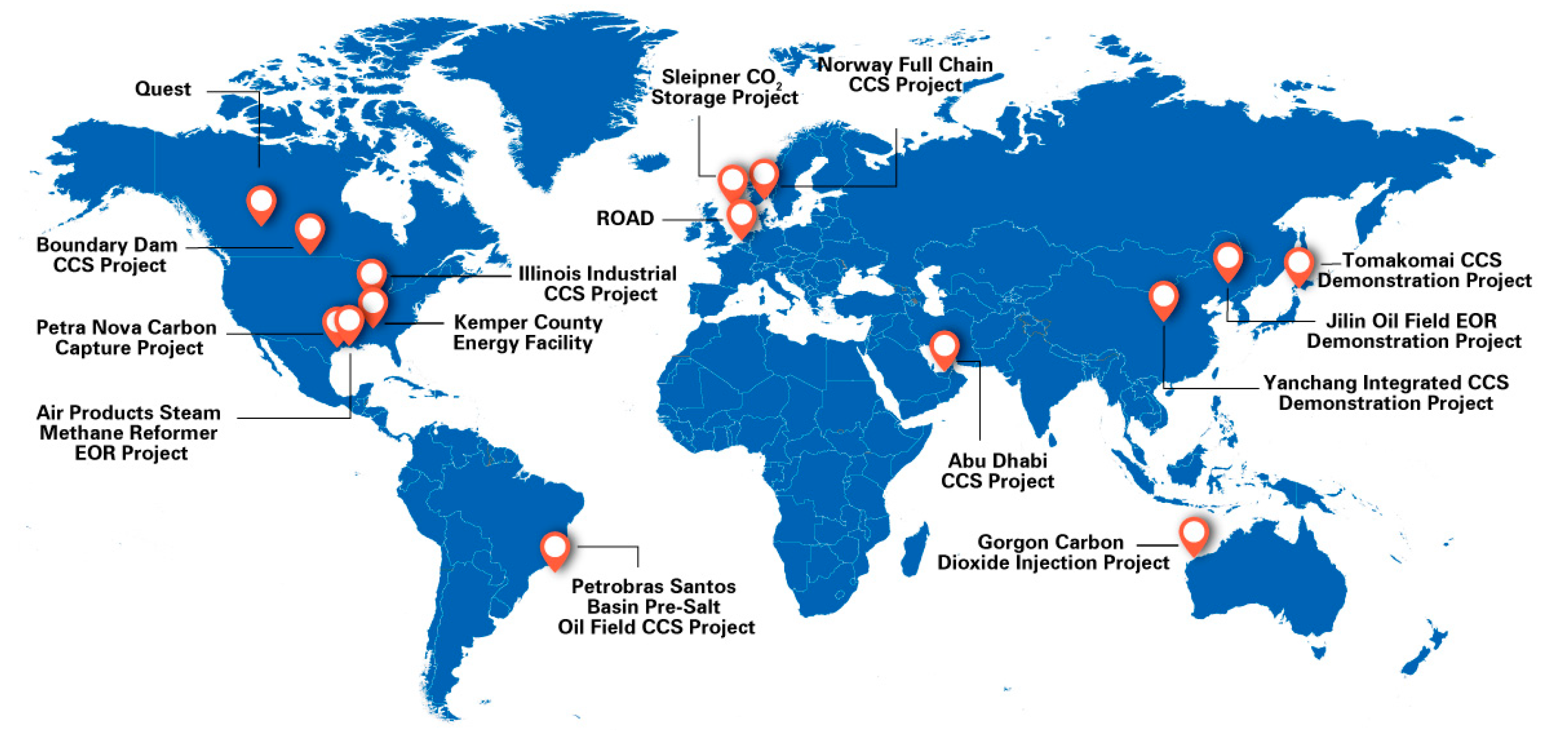

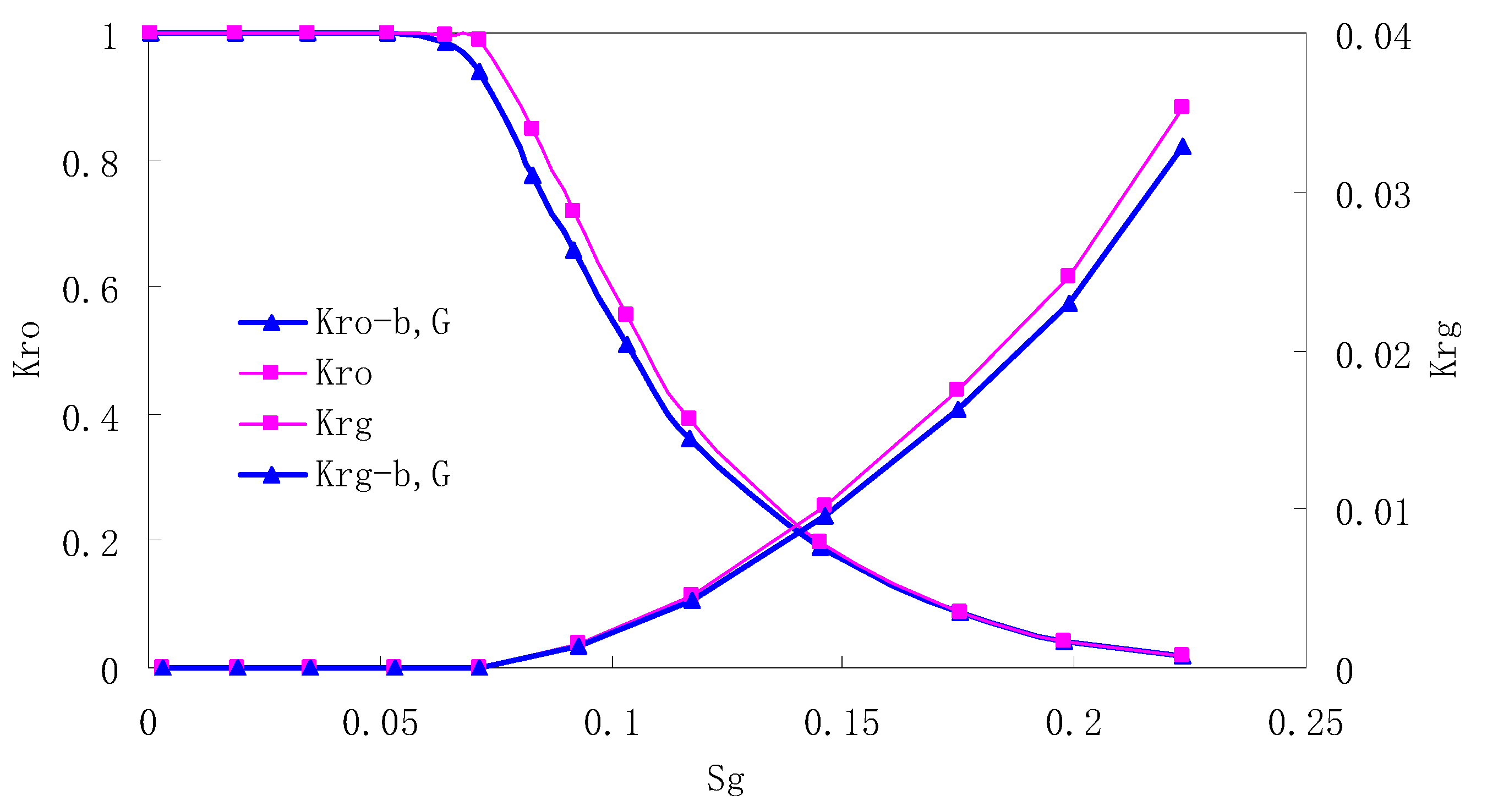
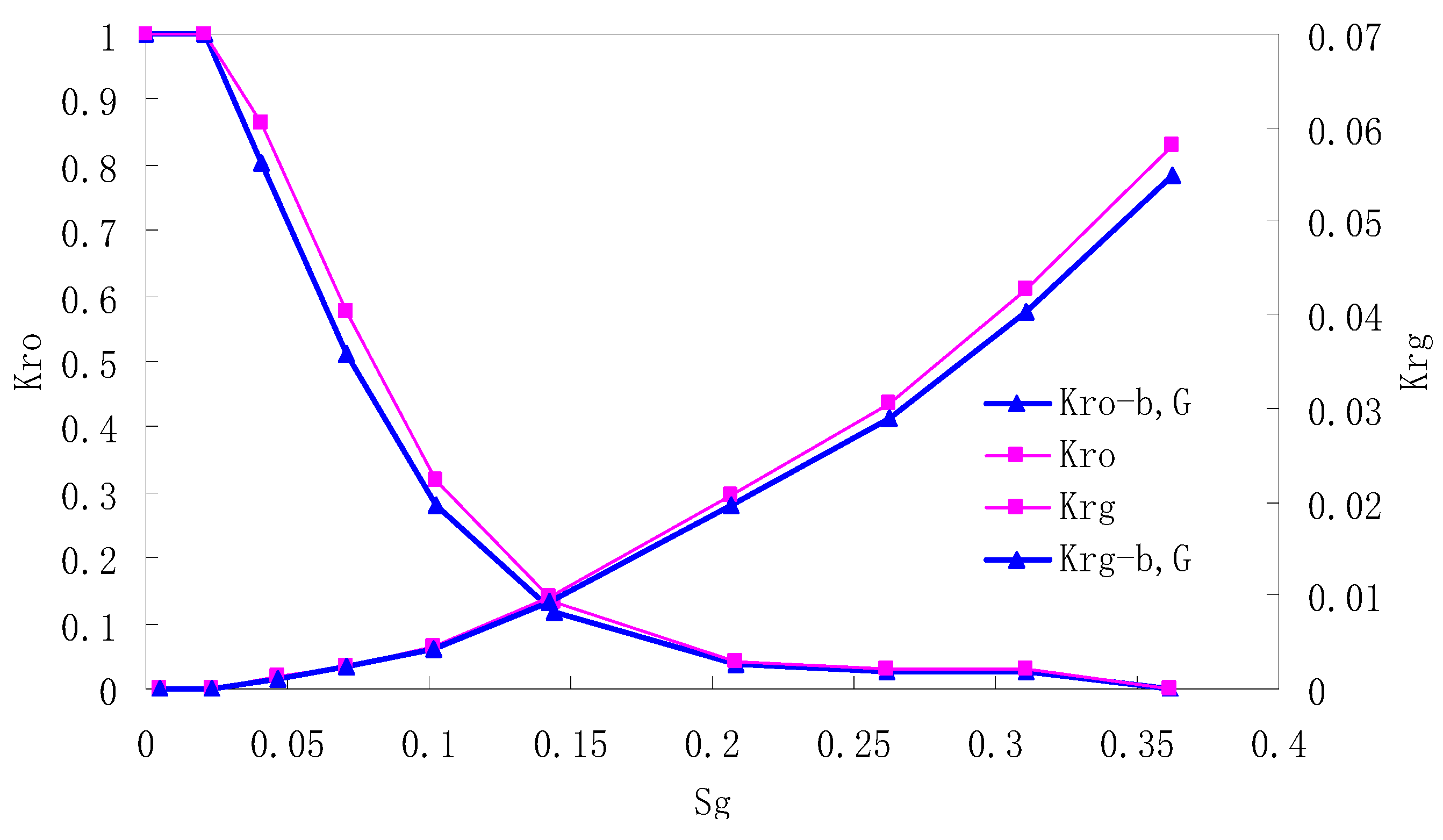
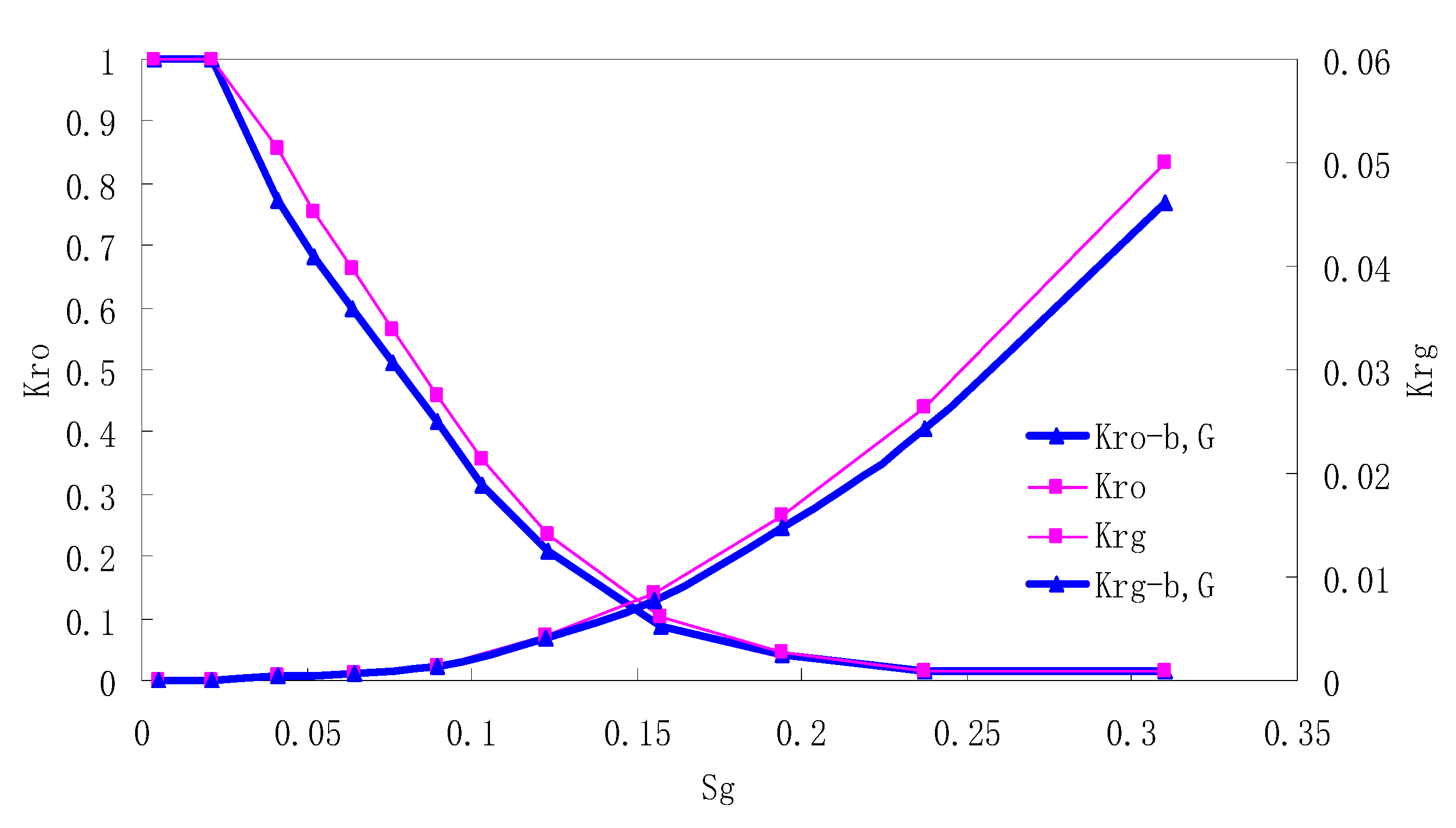
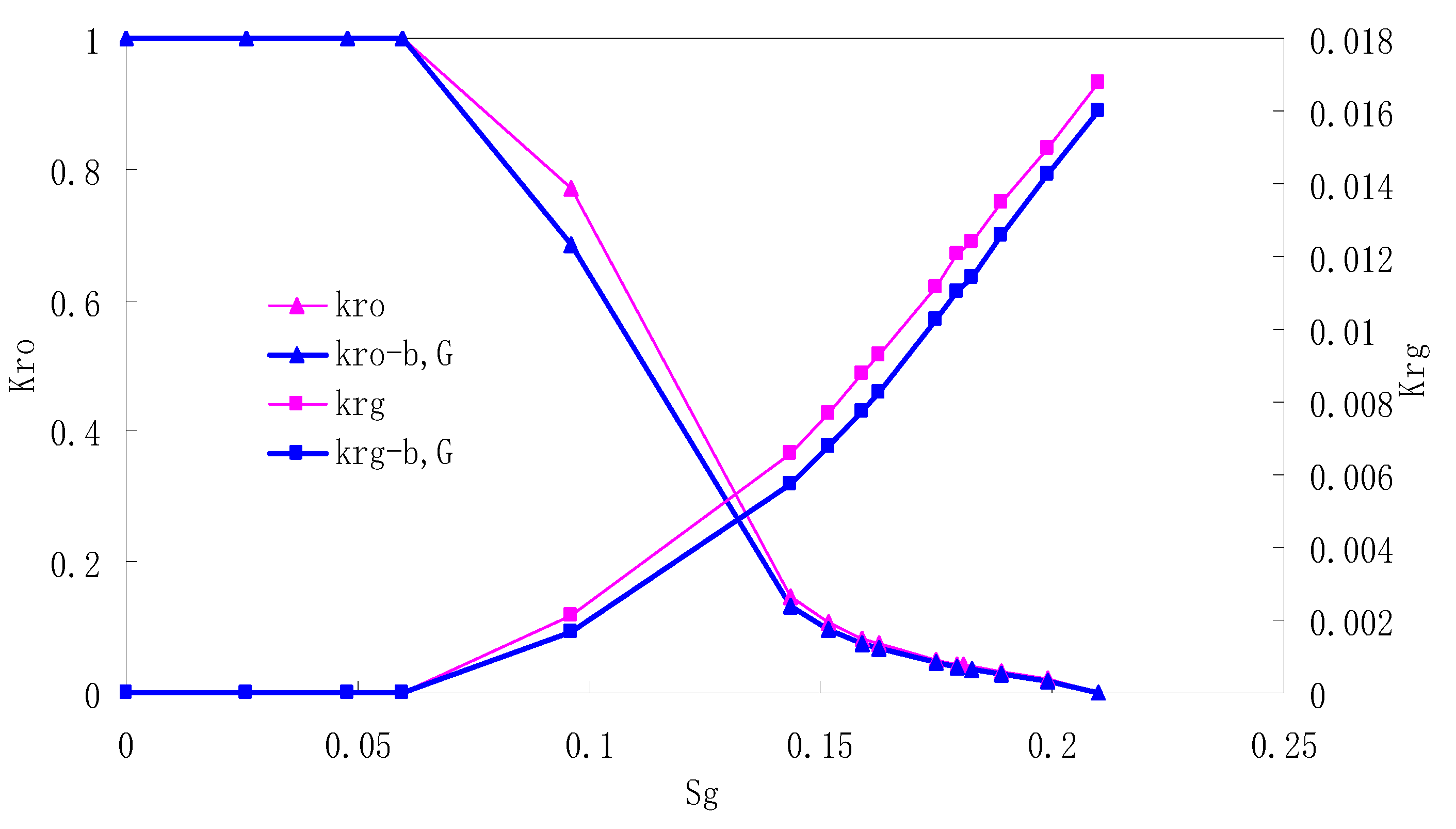
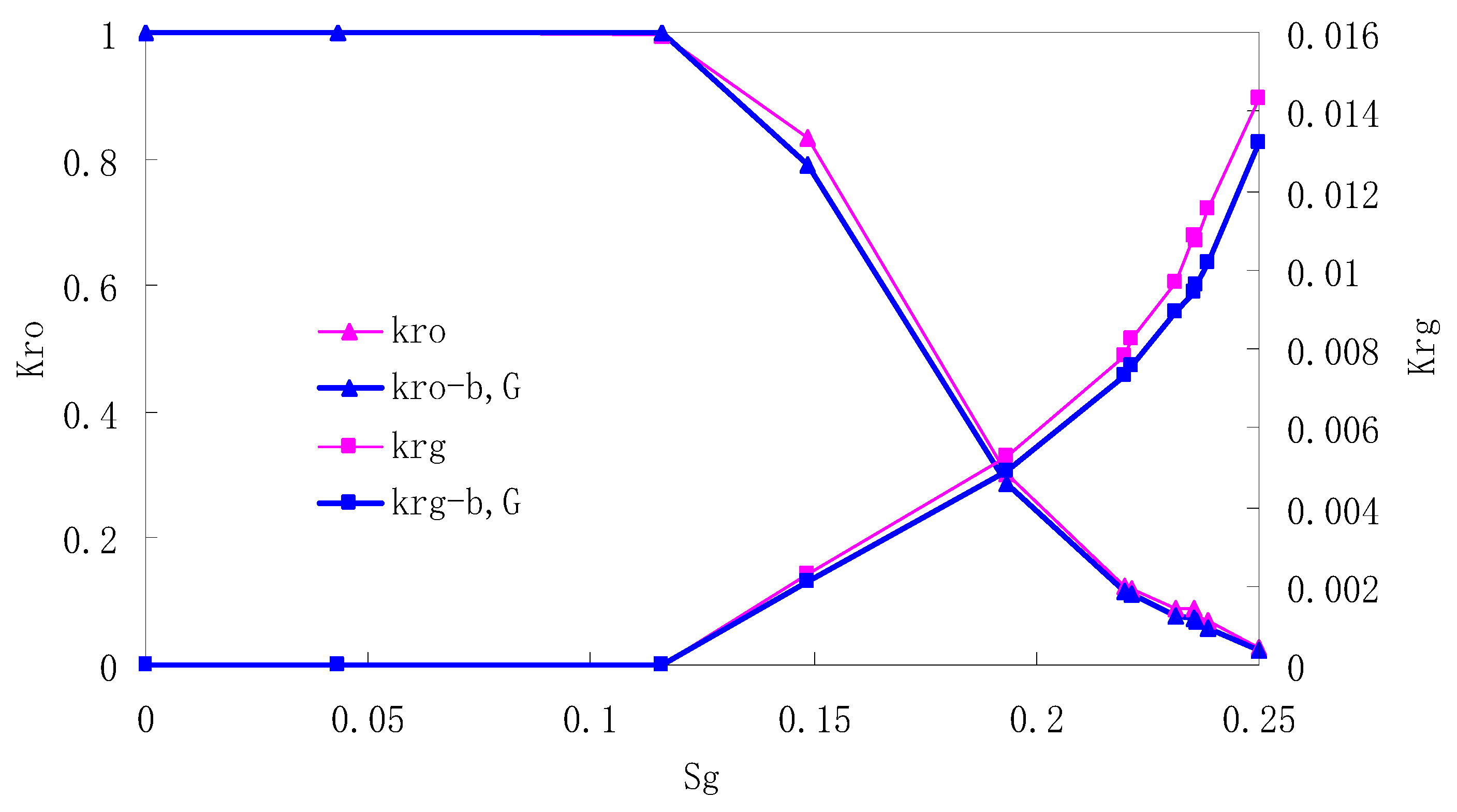

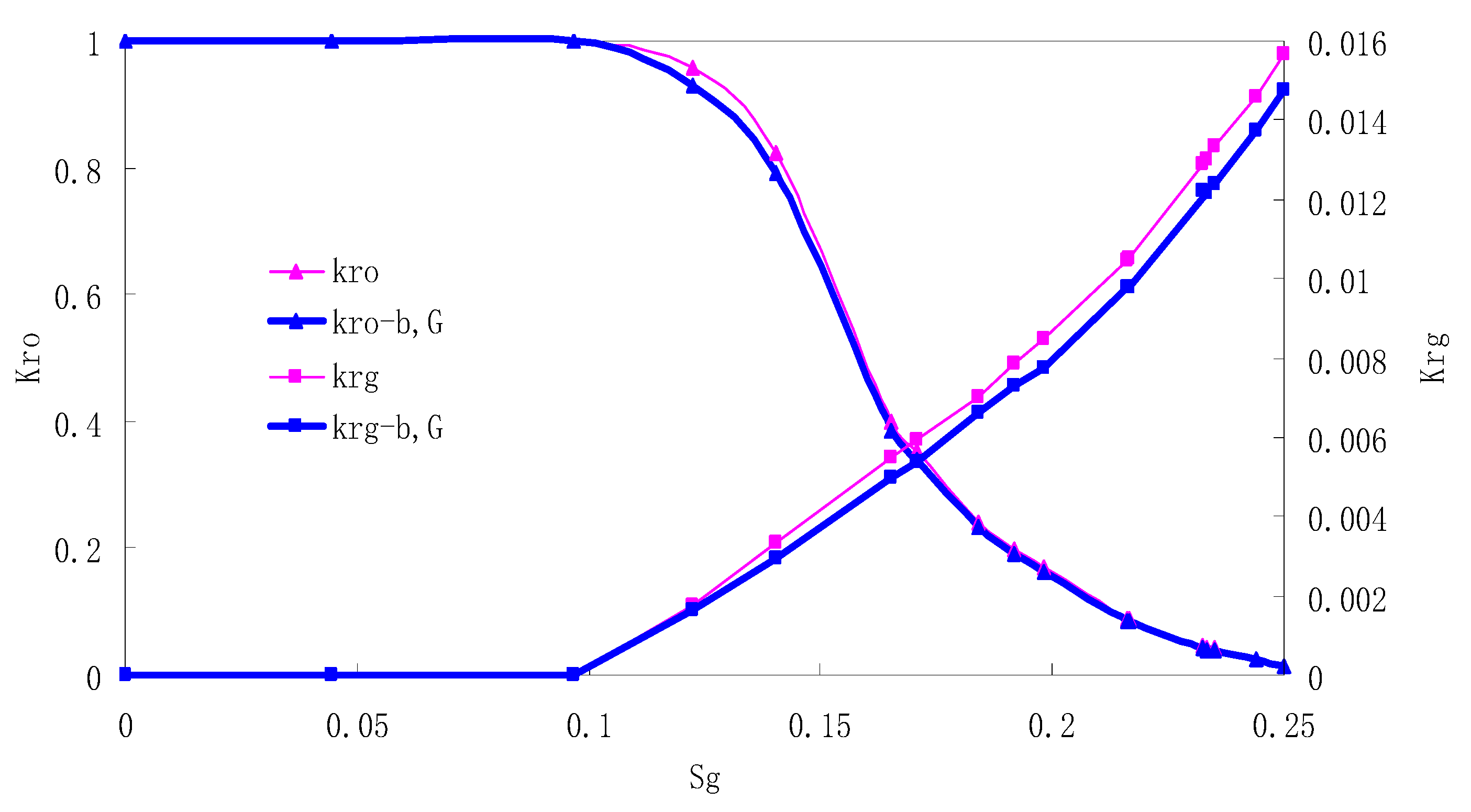
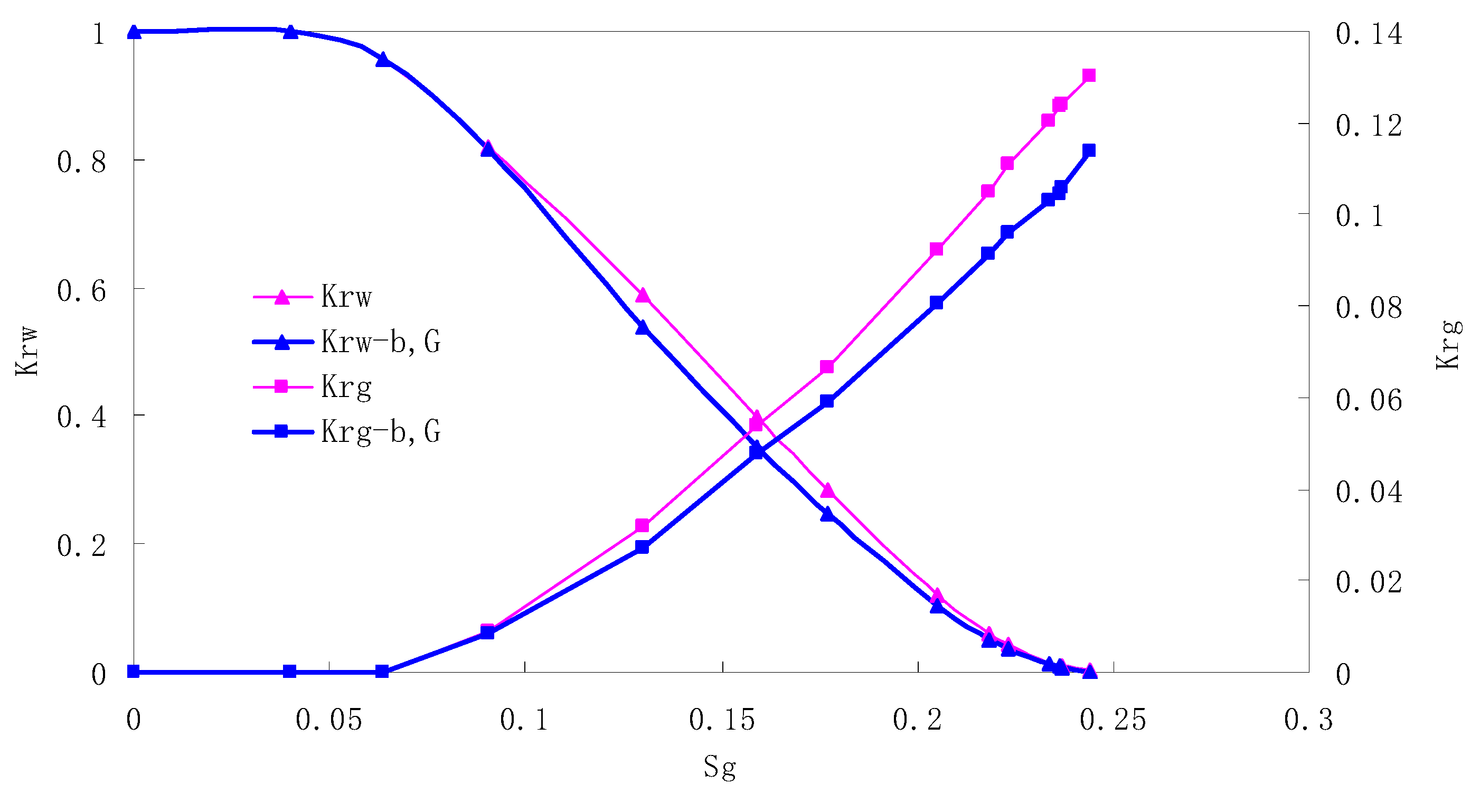
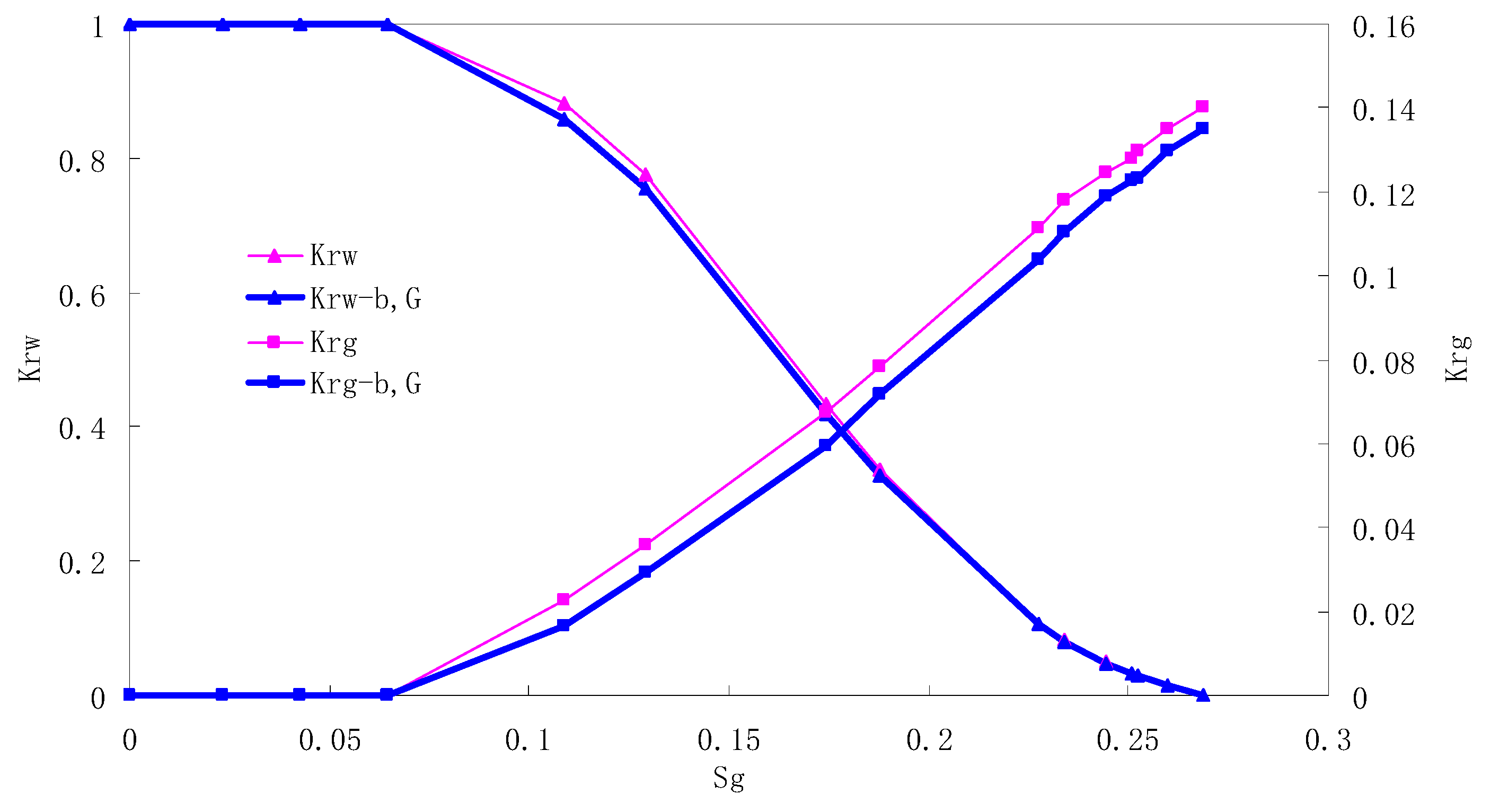
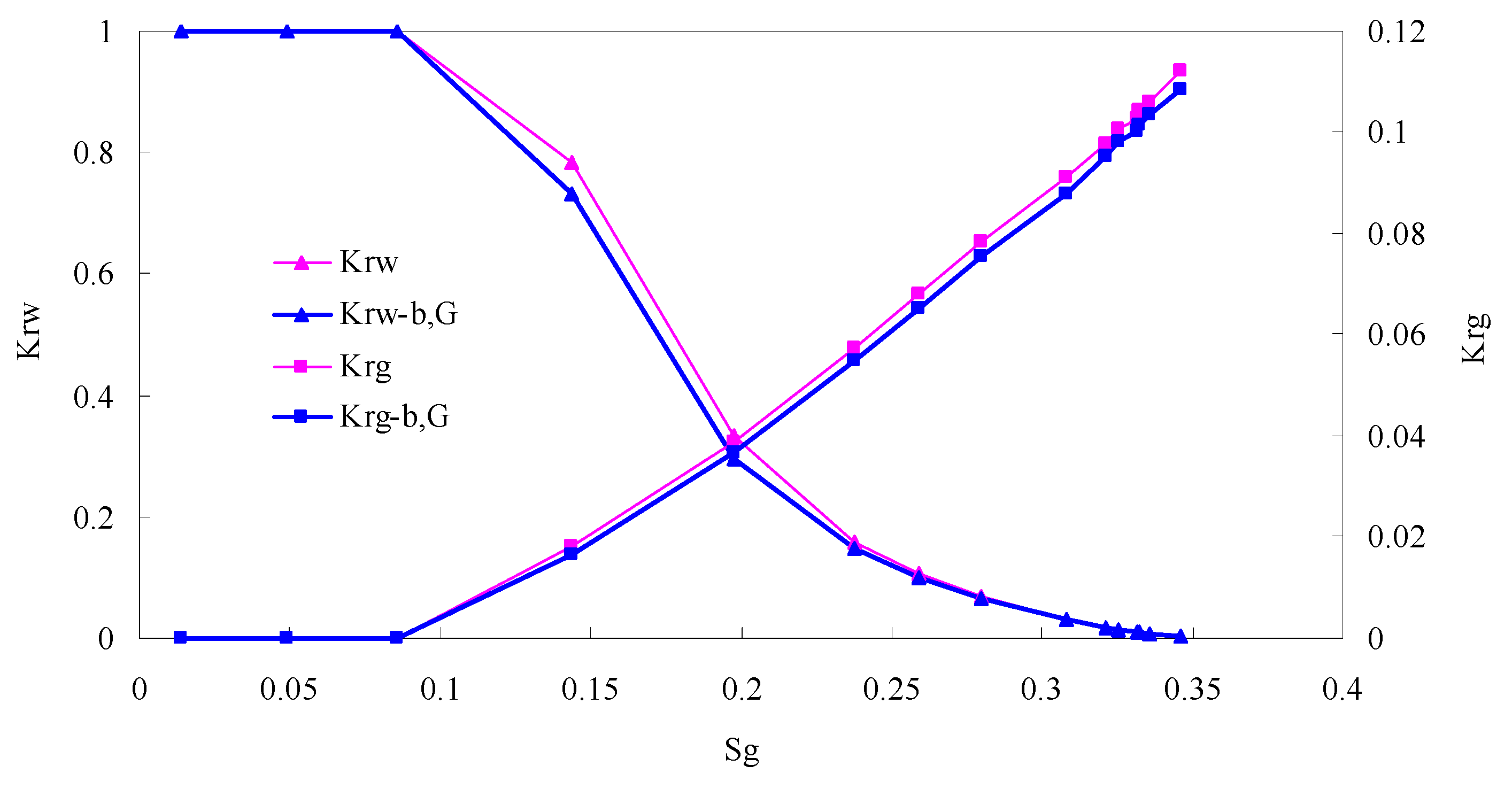
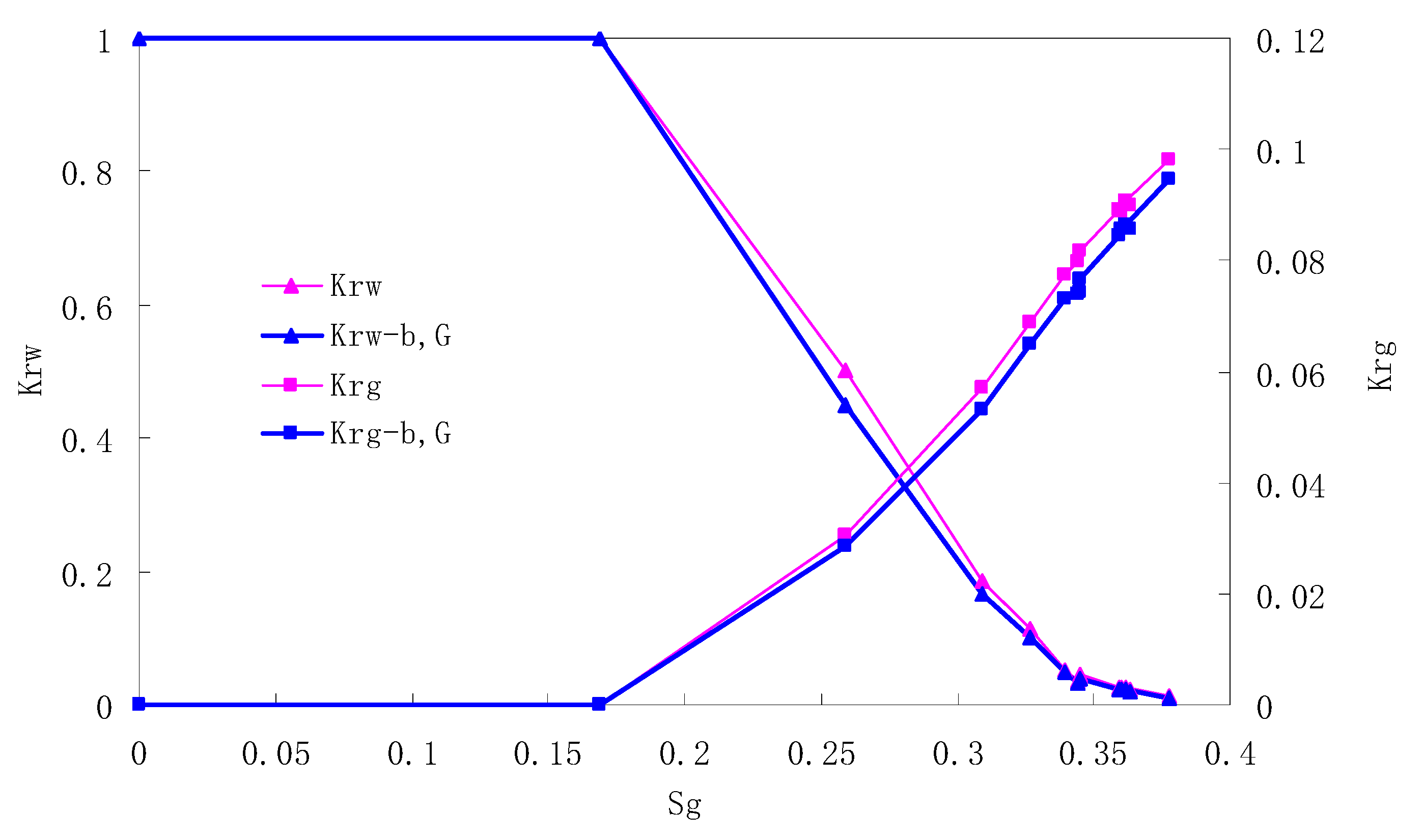
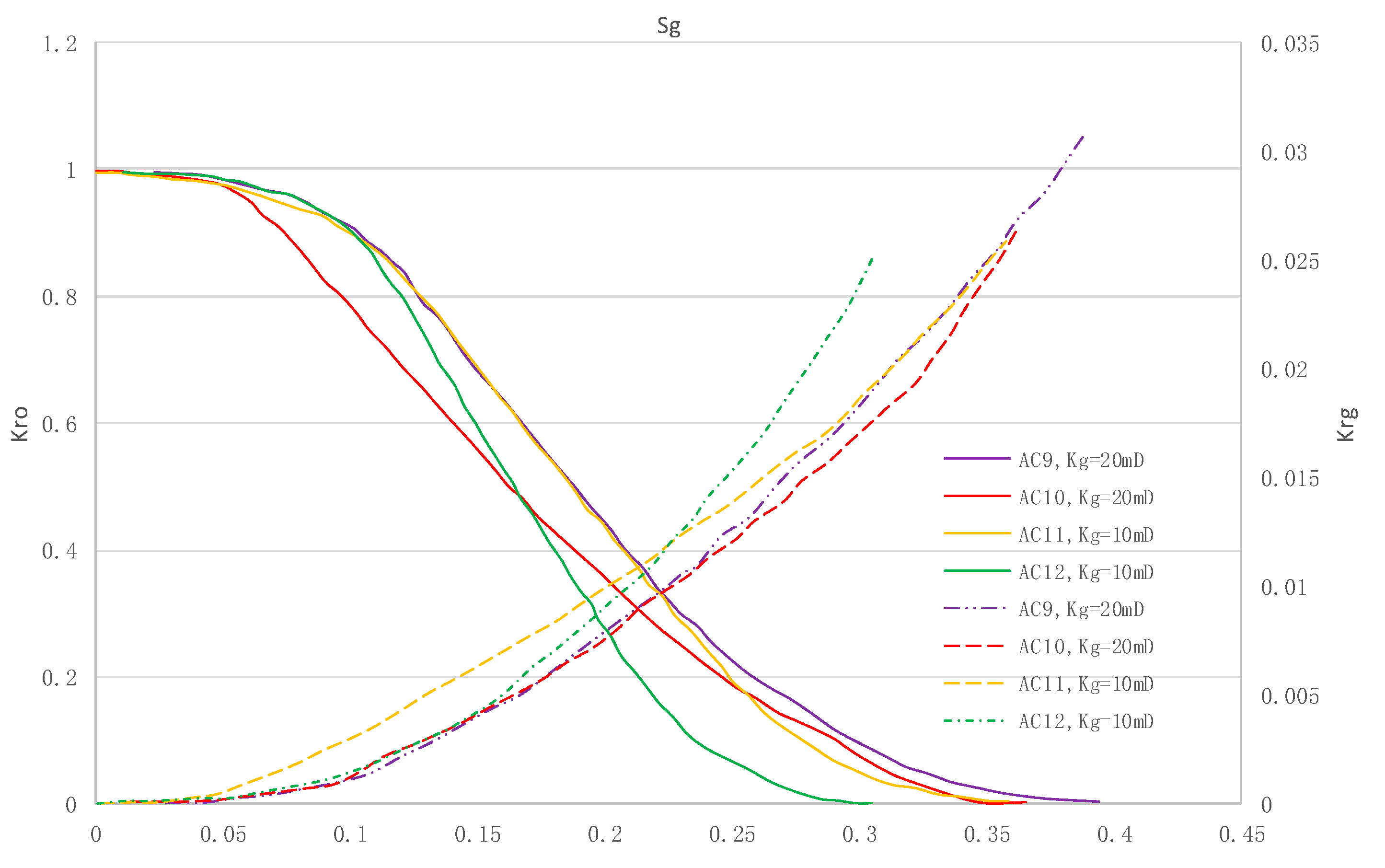
| NC1 | NC2 | NC3 | NC4 | AC1 | AC2 | AC3 | AC4 | |
|---|---|---|---|---|---|---|---|---|
| K (× 10−3 μm2) | 0.4414 | 0.5485 | 2.7186 | 1.0253 | 10.15 | 19.86 | 10.78 | 20.31 |
| L (cm) | 26.5 | 27.6 | 28.2 | 27.3 | 30 | 30 | 30 | 30 |
| D (cm) | 2.52 | 2.52 | 2.52 | 2.52 | — | — | — | — |
| A (cm2) | — | — | — | — | 4.5 × 4.5 | 4.5 × 4.5 | 4.5 × 4.5 | 4.5 × 4.5 |
| (%) | 13.02 | 13.07 | 15.52 | 14.38 | 15.31 | 19.25 | 15.83 | 17.74 |
| NC1 | NC2 | NC3 | NC4 | AC1 | AC2 | AC3 | AC4 | |
|---|---|---|---|---|---|---|---|---|
| Pin (MPa) | 1.0 | 1.0 | 1.0 | 1.0 | 1.1 | 0.5 | 1.1 | 0.5 |
| T (°C) | 74.9 | 74.9 | 74.9 | 74.9 | 45 | 45 | 45 | 45 |
| AC5 | AC6 | AC7 | AC8 | |
|---|---|---|---|---|
| K (× 10−3 μm2) | 20 | 19 | 19 | 21 |
| L (cm) | 30 | 30 | 30 | 30 |
| A (cm2) | 4.5 × 4.5 | 4.5 × 4.5 | 4.5 × 4.5 | 4.5 × 4.5 |
| (%) | 15.92 | 15.20 | 15.42 | 17.77 |
| AC5 | AC6 | AC7 | AC8 | |
|---|---|---|---|---|
| Pin (MPa) | 0.5 | 0.4 | 0.3 | 0.2 |
| T (°C) | 45 | 45 | 45 | 45 |
| AC9 | AC10 | AC11 | AC12 | |
|---|---|---|---|---|
| K (× 10−3 μm2) | 19.76 | 21.23 | 9.89 | 10.45 |
| L (cm) | 30 | 30 | 30 | 30 |
| A (cm2) | 4.5 × 4.5 | 4.5 × 4.5 | 4.5 × 4.5 | 4.5 × 4.5 |
| (%) | 16.84 | 17.23 | 15.62 | 15.73 |
| AC9 | AC10 | AC11 | AC12 | |
|---|---|---|---|---|
| Pin (MPa) | 35 | 35 | 35 | 35 |
| Pout (MPa) | 30 | 30 | 30 | 30 |
| T (°C) | 45 | 45 | 45 | 45 |
© 2020 by the authors. Licensee MDPI, Basel, Switzerland. This article is an open access article distributed under the terms and conditions of the Creative Commons Attribution (CC BY) license (http://creativecommons.org/licenses/by/4.0/).
Share and Cite
Bai, M.; Liu, L.; Li, C.; Song, K. Relative Permeability Characteristics During Carbon Capture and Sequestration Process in Low-Permeable Reservoirs. Materials 2020, 13, 990. https://doi.org/10.3390/ma13040990
Bai M, Liu L, Li C, Song K. Relative Permeability Characteristics During Carbon Capture and Sequestration Process in Low-Permeable Reservoirs. Materials. 2020; 13(4):990. https://doi.org/10.3390/ma13040990
Chicago/Turabian StyleBai, Mingxing, Lu Liu, Chengli Li, and Kaoping Song. 2020. "Relative Permeability Characteristics During Carbon Capture and Sequestration Process in Low-Permeable Reservoirs" Materials 13, no. 4: 990. https://doi.org/10.3390/ma13040990
APA StyleBai, M., Liu, L., Li, C., & Song, K. (2020). Relative Permeability Characteristics During Carbon Capture and Sequestration Process in Low-Permeable Reservoirs. Materials, 13(4), 990. https://doi.org/10.3390/ma13040990




